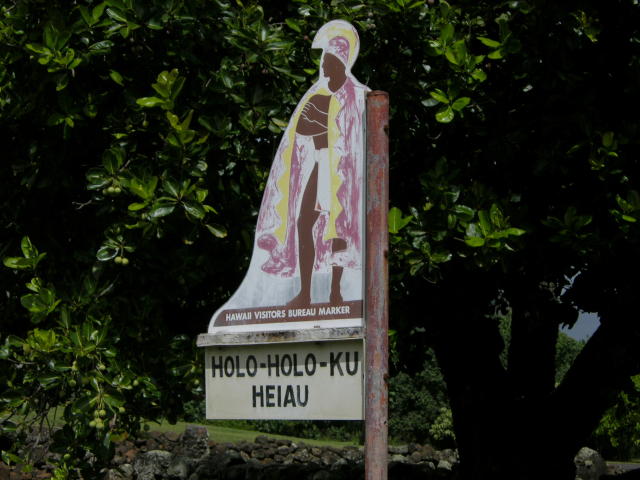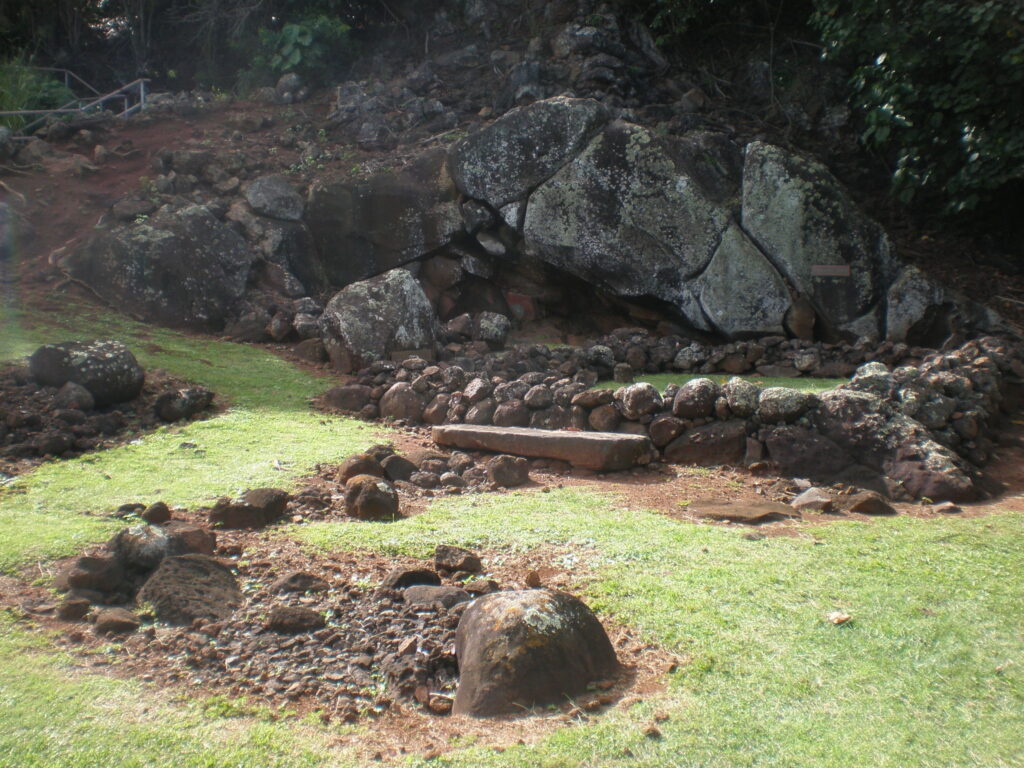The Waiʻanae Mountains, formed by volcanic eruptions nearly four-million years ago, have seen centuries of wind and rain, cutting huge valleys and sharp ridges into the extinct volcano. Mount Kaʻala, the highest peak on the island of Oʻahu, rises to 4,025 feet.
Today, only a small remnant of the mountain’s original flat summit remains, surrounded by cliffs and narrow ridges. It’s often hidden by clouds.
Mount Kaʻala is mentioned in Hawaiian mythology as a mountain that the goddess Hiʻiaka, the sister of Pele, climbed on her way back to the island of Hawai‘i from Kaua‘i. From there she saw the destruction that Pele, enraged over her long absence, created by causing a flow of lava over her lands in Puna.
According to Hawaiian traditions, the Kaʻala bog, on the west side of the summit, was once a freshwater pond used as a fishpond. Kamaoha was the goddess of this pond in which shore fish and a kind of mullet were caught. The informant who reported the pond to McAllister called it a luakini fishpond (1933), which might indicate its use only by chiefs. (TetraTech)
When viewed from Kūkaniloko, the sun sets directly behind the summit of Mount Kaʻala at the vernal and autumnal equinoxes. Thus, it has been suggested that these places may have been of importance in Hawaiian astronomy and calendric determinations. (TetraTech)
Kaʻala is the subject of several ʻŌlelo Noʻeau.
“Ka ua Kolowao o Kaʻala.
The Mountain-creeper rain of Kaʻala.
This rain is accompanied by a mist that seems to creep among the trees.”
Ancient Kahuna spoke of Mount Kaʻala as being clothed in the golden cloak of Kāne, the first deity of the Hawaiian pantheon. Kaʻala was the guardian of the road to the west, the path of the sun, the resting place on that great road to death where spirits of the dead return to their homeland. (CZM)
Several ʻŌlelo No’eau speak of Kaiona, goddess of Kaʻala and the Waiʻanae Mountains.
Ka wahine hele la o Kaiona, alualu wai li‘ulā o ke kaha pua ‘ōhai.
The woman, Kaiona, who travels in the sunshine pursuing the mirage of the place where the ‘ōhai blossoms grow.
Ke kaha ‘ōhai o Kaiona.
Kaiona’s place where the ‘ōhai grows.
He lokomaika‘i ka manu o Kaiona.
Kind is the bird of Kaiona.
Said of one who helps a lost person find his way home.
Kaiona was known for her kindness and helpfulness. She rescued travelers who lost their way while crossing her mountain home by sending an ʻiwa bird to guide lost individuals to safety. This goddess was so beloved by Hawaiians that her name was given to Bernice Pauahi Bishop in mele that honor Pauahi.
In 1970, Hawaiʻi became one of the first states in the country to recognize the importance of its unique natural resources by establishing the State Natural Area Reserves System (NARS.)
Then, in 1981, the 1,100-acre Mount Kaʻala Natural Area Reserve was established to protect the diversity of native ecosystems, including native shrublands, forests and a bog. (DLNR)
Most of the 1,100-acres of the state natural area reserve at Mount Kaʻala are made up of rugged terrain, including steep, inaccessible gulches. It ranges from wet forest at the top, to lowland dry forest.
The Mount Kaʻala NAR protects Hawaiian plants and animals and ecosystems, most found only in Hawai`i, and some very rare. The only vehicle access is a controlled government road, while arduous ridge trails lead to the summit of Mt. Kaʻala.
There, a boardwalk trail takes you on a walk through a native cloud forest. The boardwalk allows visitors to explore the misty flats of Kaʻala safely, and with a minimum of impact to the fragile plants and animals.
Protection of Mt. Kaʻala Natural Area Reserve’s watershed forests by restoring native forest ecosystems is critical for maintaining the water supply of West and Central Oahu. Volunteers reintroduced the critically endangered kamakahala – with fewer than 100 individuals remaining in the wild – to its native habitat in the ridges of Mt. Kaʻala.
(The FAA maintains an active tracking station at the summit, which is closed to the general public and secured by the US Army from Schofield Barracks. The tracking station can be clearly seen from afar as a white domed shaped structure.)

















































